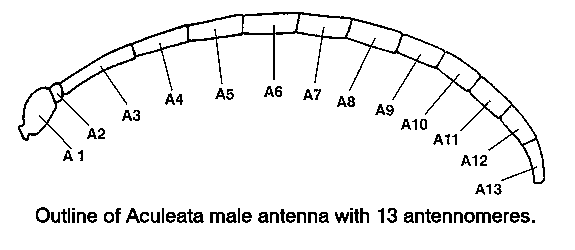PUBBLICAZIONI |
ANTONELLI |
ENTOMOLOGIA PISA |
AGRARIA PISA |
PUBBLICAZIONI |
ANTONELLI |
ENTOMOLOGIA PISA |
AGRARIA PISA |
XX International Congress of Entomology - Firenze, Italy, August 25-31, 1996
Scanning Electron Microscopy observations of male antennae of numerous species of parasitoid Aculeata belonging to several families (Sapygidae, Tiphiidae, Mutillidae, Eumenidae, Pompilidae, Sphecidae) have shown the presence of modified cuticular areas, sometimes hairless, with peculiar sculpture and pores. These areas often correspond to "tyloids" that are considered to be sensory structures. The pores may be the opening of glandular canals, so that further investigation with Transmission Electron Microscopy are in progress to confirm such an hypothesis. These male cuticular areas are probably involved in the chemical stimulation of the female antennal sensilla during mating behavior, as it happens in some species of parasitoid Parasitica showing similar structures with proven secretory function (Isidoro et al., 1996). The presence of this type of cuticular areas in male antennae of non parasitoid Aculeata, like Vespidae, Anthophoridae and Andrenidae, suggests this phenomenon may concern many more groups of Hymenoptera.
Bibliography:
Isidoro N., F. Bin, S. Colazza and S.B. Vinson, 1996 Morphology of
Antennal Gustatory Sensilla and Glands in Some Parasitoid Hymenoptera With
Hypothesis on Their Role in Sex and Host Recognition. J. Hym. Res., 5:
206239.
Explanation of symbols used in the poster: 5
A = antennomere(a)
P = pore(s)
PL = placoid(s)
SPA = specialized porous area(s)
T = tyloid(s)

| Web Author: Riccardo Antonelli |
INIZIO PAGINA |
Last updated on: |